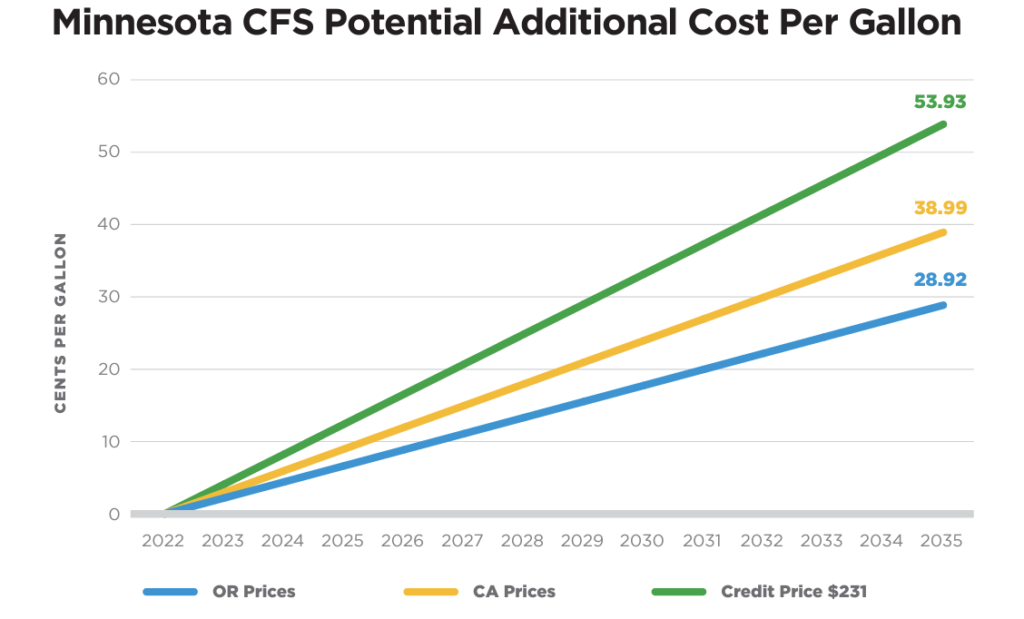Elections have consequences: What can Minnesotans expect on gas prices?
The 2022 mid-term elections gave Minnesota Democrats complete control of the Governor’s mansion, the House of Representatives, and the State Senate. With the clean sweep in all three of these branches of government, Democrats are squarely in the driver’s seat for policy for at least the next two years.
Today, we will explore what that may mean for gas prices in Minnesota if Democrats enact a Clean Fuel Standard (CFS), which is a policy that originated in California and is designed to reduce greenhouse gas emissions from transportation fuels.
What drives gas prices?
Before we delve into the CFS, it helps to take a step back to examine the major factors that affect gas prices. Overall, gas prices are driven by the global forces of crude oil supply and demand and refining capacity, which allows for crude oil to be manufactured into useful products like diesel fuel, gasoline, and jet fuel.
There is little that Minnesota can do to influence this global market dynamic because Minnesota is not an oil-producing state. However, Minnesota is a major corridor for crude oil imports from Canada, and more pipelines and refining capacity could help boost supplies and put downward pressure on prices.
What is a “Clean Fuel Standard?”
The Clean Fuel Standard regulations originated in California, where the policy is called a Low Carbon Fuel Standard (LCFS). The CFS is a complicated cap-and-trade system created by the government aimed at lowering emissions of greenhouse gasses (GHGs).
Under the regulations, the government sets a limit on the permissible amount of greenhouse gasses that can be emitted by transportation fuels, which is called a Carbon Intensity (CI) score for fuels sold in the state, with the regulations becoming stricter every year.
As the regulations become stricter every year, the cost of complying with them increases. An analysis from Stillwater Associates determined that the LCFS increased California’s gas prices by 22 cents per gallon in 2020.
In our March 2022 report, Gas Station Inflation, American Experiment used the formula provided by the Oregon Department of Environmental Quality to estimate the impact enacting a CFS would have on Minnesota gas prices. We determined that gas prices could increase between 29 and 54 cents per gallon by 2035 as a result of the program.

The additional costs resulting from adopting the California fuel standard in Minnesota would increase yearly costs for Minnesota families and businesses by $210 to $568 per household. Rural households will likely experience higher costs because they tend to drive further than urban and suburban households.
It is uncertain whether this bill will pass into law. The DFL holds the State Senate by a slim, one-vote majority, and this is due to victories in a handful of seats in Greater Minnesota that will be crucial to retaining control of the legislature in the coming years.